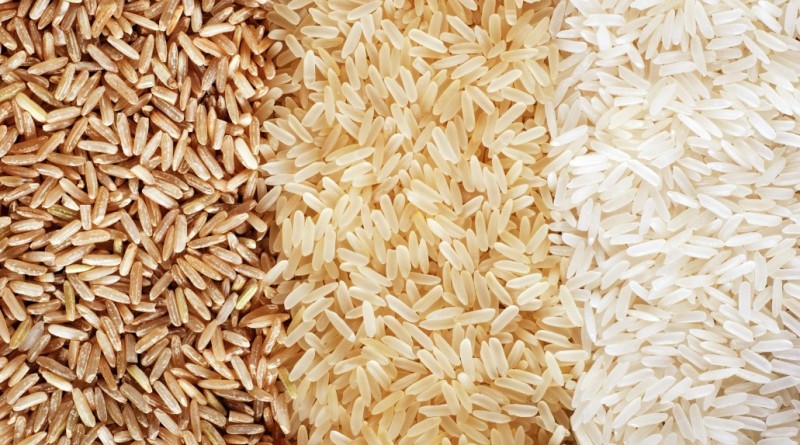Joseph R. Anticaglia MD
Medical Advisory Board
Today, we don’t blink an eye when we buy vitamin D fortified milk, vitamin B1 (thiamine) enriched cereals, iodized salt or other enriched foods. Yet, it took centuries before researchers started to figure out the biochemical composition of food and minerals and how they impacted our health.
The prevailing view in the 1800’s was that if you ate protein, fats, carbohydrates and minerals, they were sufficient to satisfy your nutritional needs. If you got sick, an infection (germ theory) or toxin caused the illness. People wondered might something else be responsible for complaints of trouble walking, bleeding gums or night blindness?
The scientific community remained more or less in the dark until rice and chickens helped shed light on the connection among food, vitamins and disease.

Rice
Rice was first thought to be cultivated about 10,000 years ago in Asia. Fast forward thousands of years to the mid-19th century; it’s during this period that polished, white rice became more accessible in western countries. The rice milling process reduced spoilage and prolonged its shelf life. It was manufactured by stripping away its outer, nutrient rich, brown layer.
People dependent on a diet of white rice were vulnerable to beriberi; a neurological disease that causes a loss of feeling in the legs and difficulty walking. Scientists eventually discovered that a lack of vitamin B1 — thiamine caused the disease beriberi.
Chickens and the Vitamin Theory
It became apparent that undiscovered dietary substances played a pivotal role in the well-being of individuals. Sir Frederic G. Hopkins in`1906 put forth the notion that accessary food factors were required in the diet for a person to remain healthy. Proteins, fats, carbohydrates and minerals were not enough to keep people in good health. An unknown, vital, mysterious substance(s) was missing in the diet. Years later, this concept became known as the vitamin theory.
At approximately the same time of Hopkins, the Dutch medical doctor Christiaan Eijkman and chickens came into the picture. Eijkman was sent to the Dutch East Indies to study beriberi. Some chickens used in the laboratory experiment developed beriberi-like symptoms when fed with polished, white rice left over from military rations.
When a new cook arrived on the scene, he refused to provide the laboratory with rice. Eijkman turned to an outside source and bought unpolished, brown rice and fed it to the chickens.
Surprisingly, the chickens that were stumbling around or could not walk, recovered completely (cured) with the unpolished, brown rice. For their pioneering work, in 1929, Hopkins and Eijkman shared the Nobel Prize in medicine — physiology that eventually led to the discovery of thiamin-vitamin B1and the “cure” of beriberi.
Vitamins are substances needed in trace amounts by the body to function well—we can’t live without them! Most vitamins cannot be manufactured by the body and we best get these non — caloric nutrients from foods in a well-balanced diet or by taking supplements. They can be classified into fat soluble and water soluble vitamins.
Fat Soluble Vitamins
Fat-soluble vitamins can dissolve in fats and oils. They include vitamins A, D, E and K and are found in the fats and oils of food. They are absorbed first into the lymph system and then travel with proteins in the blood. The body uses bile to absorb these vitamins and once absorbed, they are stored in the liver and fatty tissues.
Deficiencies of fat-soluble vitamins occur in a diet low in these vitamins, surgery for obesity, malabsorption syndromes or the consistent use of mineral oil as a laxative. Since these vitamins can be stored, there is concern of toxic buildup if you take too much of them. The body needs a little fat to absorb these vitamins. If you use fat-soluble vitamin supplements, it’s advisable to take them with food and pay particular attention to the recommended dosage.
Water-Soluble Vitamins
Water-soluble vitamins include vitamin C and the B vitamins. They are absorbed directly from the bloodstream and excess amount of these vitamins are excreted in the urine. Therefore, there is not a buildup of these vitamins in the body to any great extent. We need vitamin C in our diet to prevent bleeding gums which is one of the symptoms of scurvy.
Deficiencies are associated with low dietary intake, surgery for obesity and malabsorption syndromes. Toxic levels are associated with injudicious use of vitamin supplements.
In 1912, Casimir Funk used the term vitamins (vital-amines) to describe bioactive compounds essential to health. Since that time, remarkable advancements have occurred in our understanding of vitamins. Nutritionists and doctors recommend you get vitamins and minerals from foods instead of supplements. Research continues in efforts to uncover additional “necessary food factors” indispensable to our health.
References
- Richard D. Semba; The Discovery of Vitamins; Int. J. Vitam. Nutr. Res., 82 (5), 2012, 310–315
- U.S. Department of Agriculture; Vitamins and Minerals, Dietary Reference Index, 1998
- Megan Sweeney, Susan McCouch; The Complex History of the Domestication of Rice; Ann Bot.; Oct. 2007
- Bharti, K and Kalra S; Vitamins at the Nobels; Journal of Medical Nutrition and Nutraceuticals 2013
This article is intended solely as a learning experience. Please consult your physician for diagnostic and treatment options.

